Lamellarins and related pyrrole-derived alkaloids from marine organisms
- PMID: 18095718
- PMCID: PMC4928200
- DOI: 10.1021/cr078199m
Lamellarins and related pyrrole-derived alkaloids from marine organisms
Erratum in
- Chem Rev. 2010 Jun 9;110(6):3850
Figures
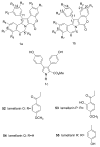
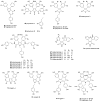




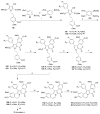
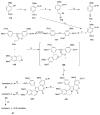


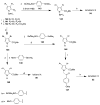




Similar articles
-
Denigrins A-C: new antitubercular 3,4-diarylpyrrole alkaloids from Dendrilla nigra.Nat Prod Res. 2014;28(12):888-94. doi: 10.1080/14786419.2014.891112. Epub 2014 Mar 21. Nat Prod Res. 2014. PMID: 24650250
-
Lamellarins, from A to Z: a family of anticancer marine pyrrole alkaloids.Curr Med Chem Anticancer Agents. 2004 Jul;4(4):363-78. doi: 10.2174/1568011043352939. Curr Med Chem Anticancer Agents. 2004. PMID: 15281908 Review.
-
Antibacterial and Antibiofilm Potentials of Marine Pyrrole-2-Aminoimidazole Alkaloids and their Synthetic Analogs.Mini Rev Med Chem. 2018;18(19):1640-1658. doi: 10.2174/1389557516666160505120157. Mini Rev Med Chem. 2018. PMID: 27145848 Review.
-
Densanins A and B, new macrocyclic pyrrole alkaloids isolated from the marine sponge Haliclona densaspicula.Org Lett. 2012 Dec 21;14(24):6154-7. doi: 10.1021/ol3028303. Epub 2012 Dec 5. Org Lett. 2012. PMID: 23211017
-
Lamellarin alkaloids: Isolation, synthesis, and biological activity.Alkaloids Chem Biol. 2020;83:1-112. doi: 10.1016/bs.alkal.2019.10.001. Epub 2020 Jan 23. Alkaloids Chem Biol. 2020. PMID: 32098648 Review.
Cited by
-
Synthesis and HPLC-ECD Study of Cytostatic Condensed O,N-Heterocycles Obtained from 3-Aminoflavanones.Biomolecules. 2020 Oct 20;10(10):1462. doi: 10.3390/biom10101462. Biomolecules. 2020. PMID: 33092128 Free PMC article.
-
Synthesis of Pyrroles through the CuH-Catalyzed Coupling of Enynes and Nitriles.J Am Chem Soc. 2020 Jun 3;142(22):9908-9914. doi: 10.1021/jacs.0c03859. Epub 2020 May 19. J Am Chem Soc. 2020. PMID: 32395998 Free PMC article.
-
Employing of Fe3O4/CuO/ZnO@MWCNT MNCs in the solvent-free synthesis of new cyanopyrroloazepine derivatives and investigation of biological activity.Mol Divers. 2022 Aug;26(4):2121-2134. doi: 10.1007/s11030-021-10319-y. Epub 2021 Dec 3. Mol Divers. 2022. PMID: 34860313
-
Recent Advances in Regioselective C-H Bond Functionalization of Free Phenols.Molecules. 2023 Apr 12;28(8):3397. doi: 10.3390/molecules28083397. Molecules. 2023. PMID: 37110630 Free PMC article. Review.
-
Gold-catalyzed formation of pyrrolo- and indolo-oxazin-1-one derivatives: The key structure of some marine natural products.Beilstein J Org Chem. 2015 May 28;11:897-905. doi: 10.3762/bjoc.11.101. eCollection 2015. Beilstein J Org Chem. 2015. PMID: 26124892 Free PMC article.
References
-
- Andersen RJ, Faulkner DJ, He C-H, Van Duyne GD, Clardy J. J Am Chem Soc. 1985;107:5492.
-
- Cantrell CL, Groweiss A, Gustafson KR, Boyd MR. Nat Prod Lett. 1999;14:39.
-
- Lindquist N, Fenical W, Van Duyne GD, Clardy J. J Org Chem. 1988;53:4570.
Publication types
MeSH terms
Substances
Grants and funding
LinkOut - more resources
Full Text Sources
Other Literature Sources

